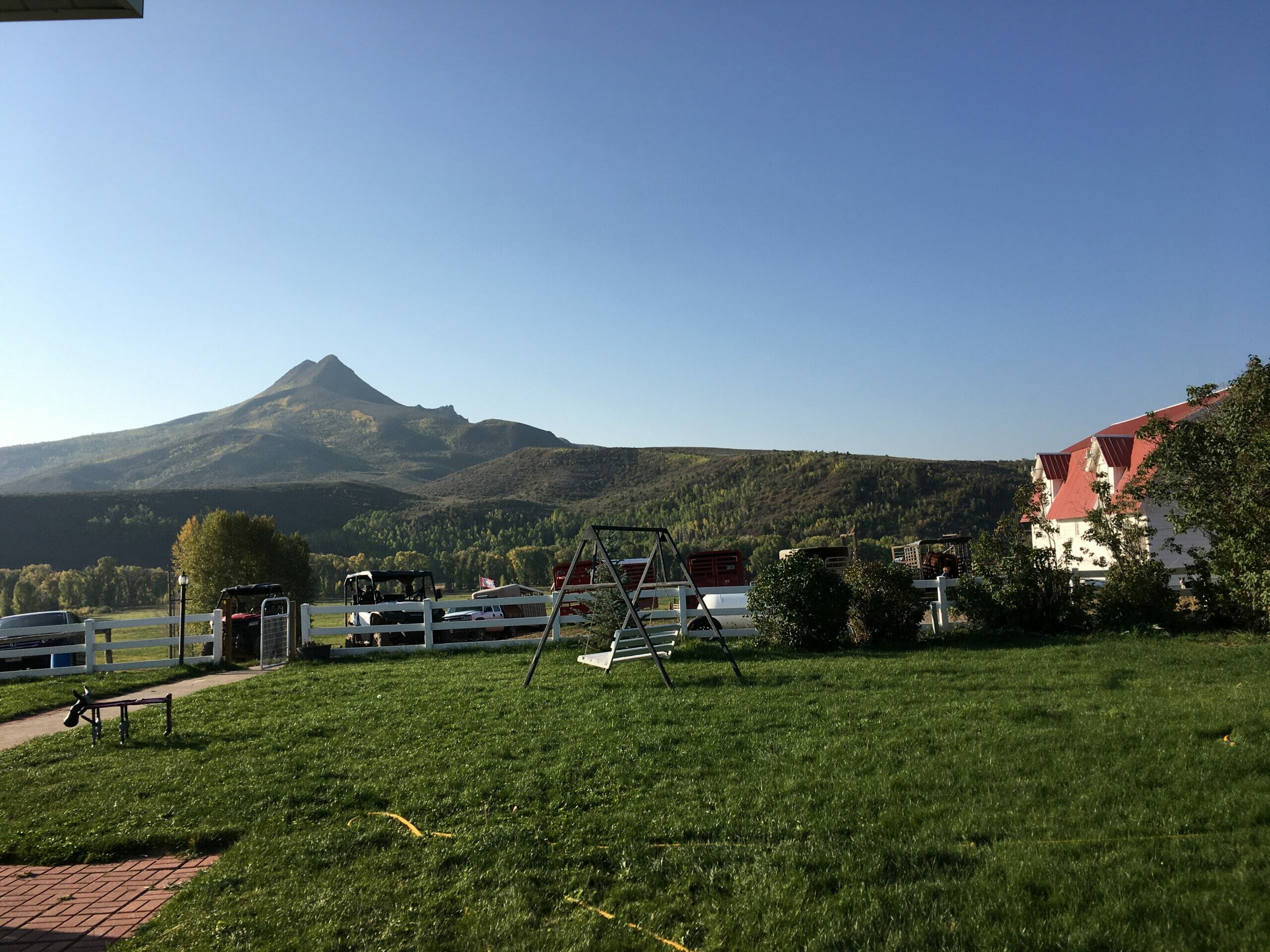FFA president joins Trout Unlimited and other partners to urge passage of infrastructure funding to ensure water security in the West
By Laura Ziemer and Pat O’Toole
It’s not every day that you see municipal, agricultural, and conservation interests coming together around big, substantive issues. Last month, these diverse interests jointly urged Congress to include resources for water, forestry and ecosystem restoration programs in addition to the infrastructure bill using the budget reconciliation process. The joint letter makes specific recommendations to meet the challenges of water security and drought resilience in the West.
This collaboration is born out of the recognition that we’re all in it together. In the West, that means when it comes to floods, fires and drought, we need solutions that work for all of us. It’s going to require improved technology and forward-thinking regulations so we can do large-scale water recycling for our municipalities; it’s going to need investment in efficient water delivery systems that are reliable and conserve water; and, it means our landscapes need restoration investment so they build resilience to the hotter and drier conditions we’ll face in the future.
Time on the landscape, together
Less than a week after the joint letter was delivered to the offices of House and Senate leadership, the partnership got down to business.
Two Trout Unlimited staff, Scott Yates and Laura Ziemer, were graciously hosted at Sharon and Pat O’Toole’s Ladder Ranch, which straddles the Wyoming-Colorado border. Pat O’Toole is president of the Family Farm Alliance, and he did not want to wait for Congress to act on the infrastructure bill and budget reconciliation funding to start thinking big about what could be done when they pass.
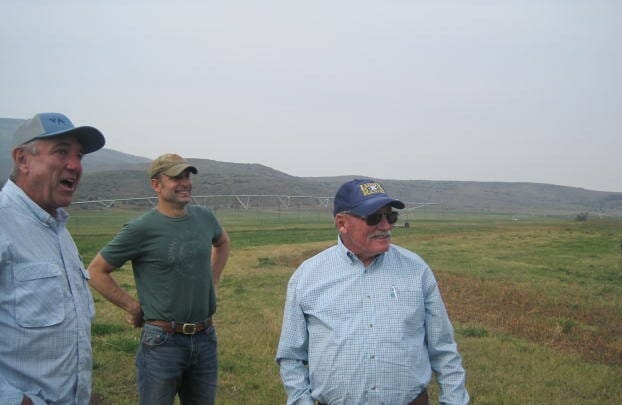
Nestled into a draw at the confluence of Battle Creek and the Little Snake River high in the headwaters of the Colorado River near Baggs, Wyoming, the working Ladder Ranch celebrated 140 years of family stewardship of its ranch lands just a few weeks prior, with three generations still working the ranch. On this particular sunny September afternoon, the O’Tooles convened a gathering of restoration professionals: three foresters from two states, a soil scientist, a hydrologist and the board president of the Upper Yampa River Water Conservancy District, and our two TU staff.
The attendees were welcomed and treated to now-famous Ladder Ranch hospitality, joining a long list of westerners who have been invited to the ranch. Downing sandwiches and freshly baked chocolate chip cookies on their inviting deck, we traded stories of restoration success and concerns over the amount of work still left to do. Mobilizing into 4-wheelers, we traveled up Battle Creek to see stunning cottonwood galleries showing off their fall regalia of bright yellows and greens, impressive in their wide distribution of ages and vigorous regeneration on the creek’s broad floodplain and living harmoniously with rotational sheep and cattle grazing. We saw re-built irrigation diversion structures that not only deliver reliable flood irrigation water but also provided fish passage and deep pools for wild rainbow trout.
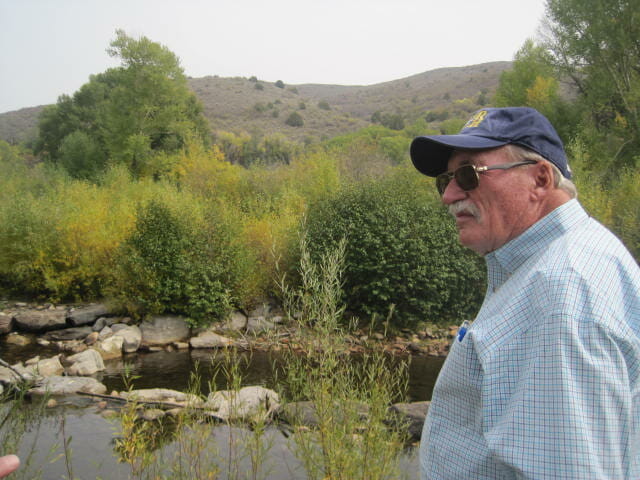
Returning downstream, the group stopped at a pair of center pivots irrigating hay fields on a bench above Battle Creek. Scott Yates, director of TU’s Western Water and Habitat Program, described how TU’s Brian Hodge had worked with the O’Toole family to put in these pivots in the last couple of years. Yates said, “The gravity-fed pipe and sprinklers provide reliable irrigation while the water formerly lost to ditch seepage on its journey to gain the bench was left in Battle Creek for wild rainbow trout and to provide head for the flood-irrigation diversions below.”
Yates added, “after partnering for years on Farm Bill and other policy issues it was great to partner directly with Pat and the family’s ranch in a basin that faced serious drought issues in recent years.”
The flood irrigation of pastures along the creek complement the sprinklers’ hay pastures. The flood irrigation adjacent to Battle Creek provides return flows and bird habitat, while the efficient sprinklers produce hay and flows in Battle Creek.
The joint letter’s recommendation to double conservation title programs under the Farm Bill, such as Environmental Quality Incentives Program, will help make more projects happen like those along Battle Creek.
Federal partners weigh in conservation efforts
Next, we traveled east in pick-ups to the Ladder Ranch’s summer pasture on high-elevation ground in the Routt National Forest. As we gained elevation, we saw bright splashes of yellow aspen against the dark green of conifers. Stopping at a ridge crest, the crew piled out as Pat O’Toole showcased a territorial view of a broad meadow with a meandering stream flanked by stands of mixed aspen, lodgepole, fir and spruce. The foresters spoke of the possibility of thinning stands in a mosaic pattern to restore diverse wildlife habitat while reducing fuel loads to help moderate the intensity of future wildfires.
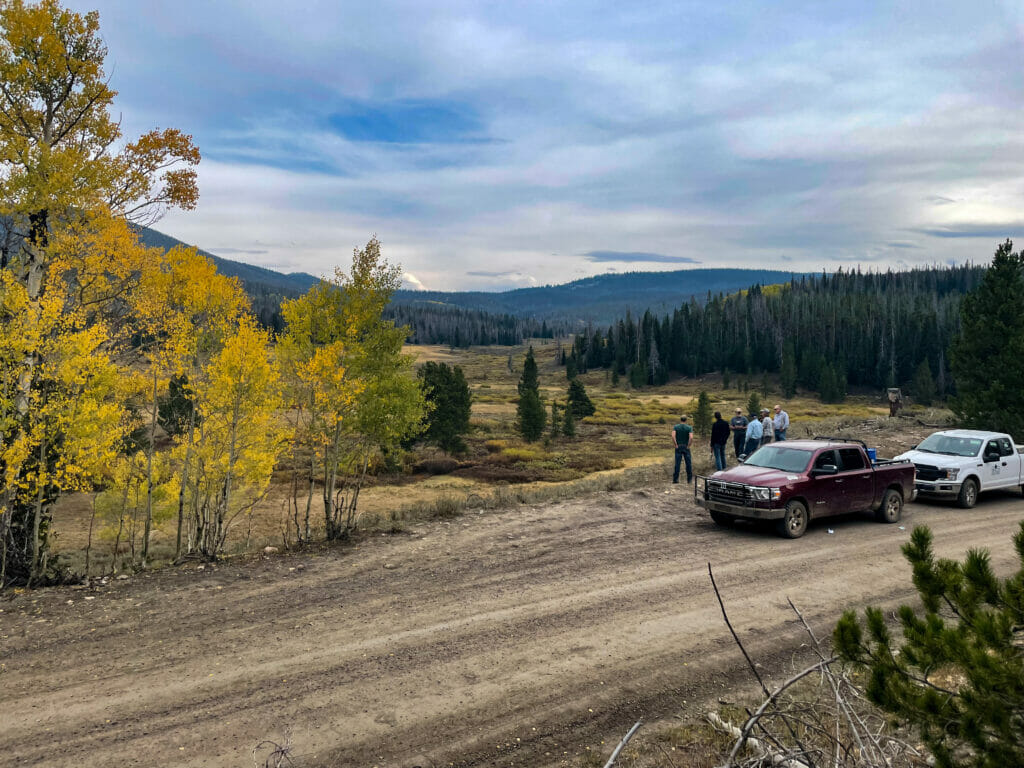
Pat described a recent trip to this spot with a local forest products entrepreneur who, if provided with the certainty of a long-term wood supply contract for timber typically considered unmerchantable, could borrow significant money to invest in his business and grow his ability to manufacture wood “straw,” a mat of match-stick-like wood cuttings with a variety of uses. Experts spoke of the potential to use the still-standing but dead lodgepole pine for merchantable products that can subsidize the cost of restoration while retaining needles, leaves, and twigs on the ground to recycle nearly all of the trees’ nutrients into soils. The gathering talked about how forest products have been shifting to become one of several “means” to an “ecological end,” in contrast to historical forestry practices in which the forests themselves were a means to an “industrial end” of timber production.
Dr. Caroline Nash, our hydrologist, spoke of the potential to combine these upland forest treatments with the restoration and maintenance of streams and valley-floor wetland complexes. Retaining snow melt in floodplains connected to stream channels with robust riparian cover creates a giant “sponge” to retain the life-giving snowmelt on the land longer, increasing soil moisture, elevating groundwater levels, reducing erosion and serving as a natural fire break.
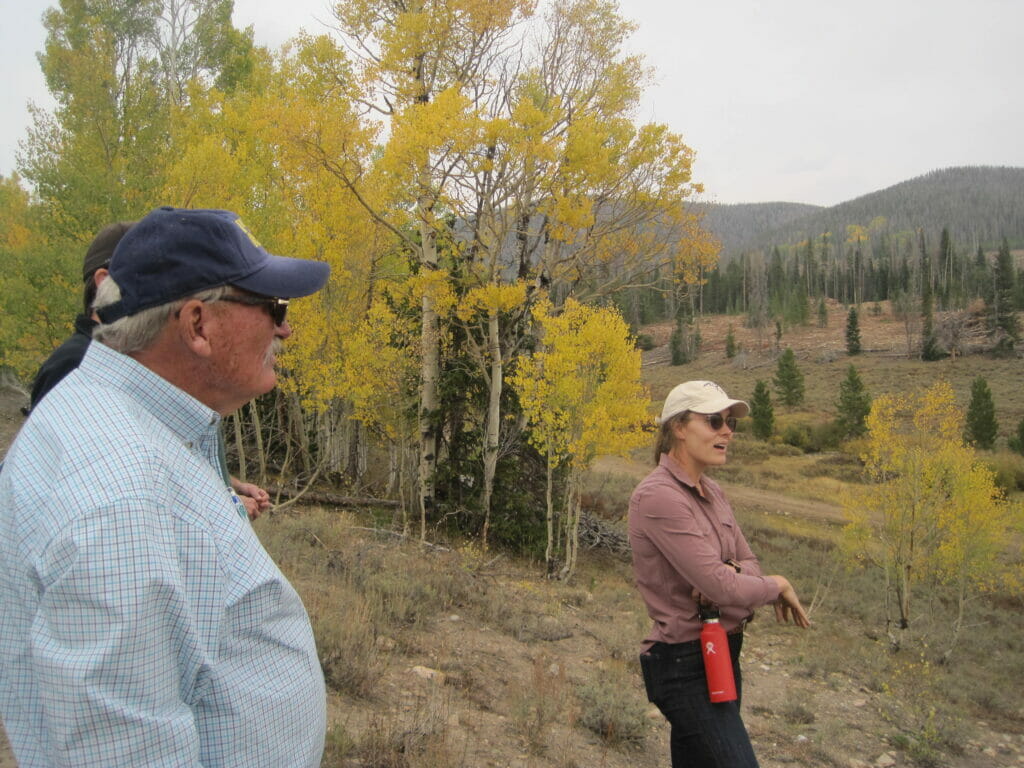
The joint letter’s recommendation for a $30 billion investment in forest and watershed restoration, and fuel-load reductions could carry out the integrated vision we shared on that ridge crest that day.
Later that evening, after a three-generation dinner at the ranch’s well-worn wooden table that hosts the frequent gathering of family, we sipped whiskey generously poured by Eamon O’Toole and mused on the day. While daunted by the enormity of the climate change-related challenges we face in the West, we also reveled in the scope of expertise and experience that had assembled at the Ladder Ranch. As the harvest moon rose over Battle Mountain and the whiskey cooled over ice, we were content in the fellowship of the day and the shared vision for restoration of this piece of ground stretching as far as the eye could see. It was enough, for now, to think that our common commitment could restore this ground high in the headwaters of the Colorado River basin — with some help from Congress.


